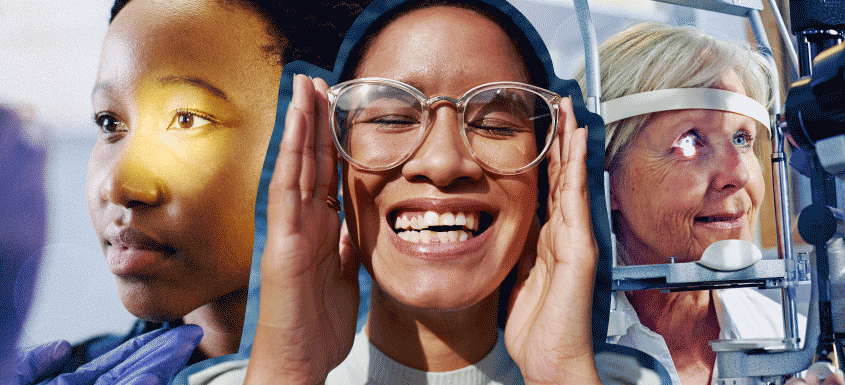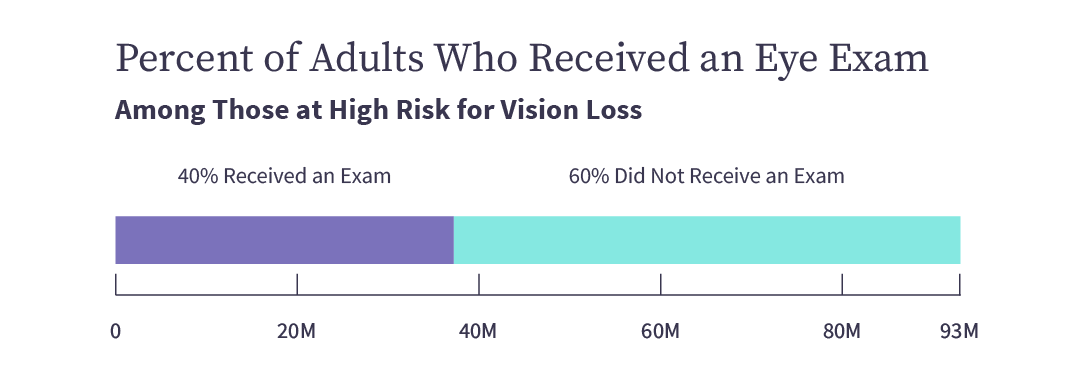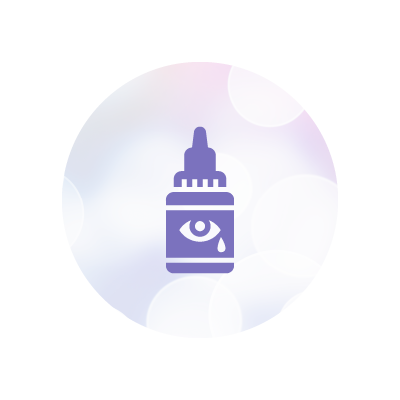Women’s Health: Tips for Vision Care

More than 93 million American adults are at high risk for vision loss, according to a JAMA Ophthalmology study on eye care in 2017. Of these individuals, only 40% actually received an eye exam in the previous year.

Chronic conditions such as diabetes can make vision problems worse—but many chronic disease prevention and management programs fail to address vision care, according to the CDC’s fact page on eye and vision health.
For these reasons, vision care is as essential as a yearly physical, especially for those living in communities that lack the built environs to fully support individuals with blindness, low vision and other eye conditions.
Having regular eye exams and care is especially pertinent for women, who are more likely than men to develop “sight-threatening conditions,” according to an article on women’s eye health by the American Academy of Ophthalmology. These include cataracts, glaucoma and age-related macular degeneration, which the National Eye Institute noted is more common in women over 80 than men. Furthermore, the National Federation of the Blind reported that more than 3.9 million women in the United States reported a visual disability compared to over 3.2 million men in 2016.
What Are the Barriers to Accessing Eye Health Services?
Public health professionals and vision providers should note that, even when individuals understand the importance of eye care, they may still experience barriers to adequate access. These factors include:

Insurance
Without adequate coverage, women may struggle to afford regular eye exams and appropriate care.

Transportation
Full eye exams cannot be conducted virtually, which means transportation options are still critical for accessing eye health services.

Childcare
Parents may be unable to pay for the childcare that would allow time for an eye appointment.

Flexible Work
While some communities have vision providers who offer appointments outside working hours, others do not, making accessing care difficult for working women.
What Is an Eye Health Screening?
Ophthalmologists perform eye exams to check for early signs of eye disease and changes in vision. An eye exam is more extensive and thorough than a lens prescription update and differs from the vision screenings that children receive at pediatric checkups or at school.
How Often Should You Get an Eye Exam?
For adults without risk factors or symptoms, the Mayo Clinic recommends the following schedule:
| Age Range | Eye Exam Frequency |
|---|---|
20 to 39 | Every 5 to 10 years |
40 to 54 | Every 2 to 4 years |
55 to 64 | Every 1 to 3 years |
65 and up | Every 1 to 2 years |
After the eye exam, the vision care provider will recommend the right cadence for you and your eyes.
However, the AAO highlights several possible exceptions. The following risk factors may necessitate more frequent eye exams, including:
- Conditions that can affect vision, including diabetes and high blood pressure
- Present symptoms, such as double vision, dry eye, light flashes and floaters
- Family history of eye diseases
- History of potential harmful behaviors, such as smoking
- Hazardous work environment
Regular exams and screenings for heart health can also help. “Having a healthy heart also appears to go along with good health for your eyes,” said Mary Elizabeth Hartnett, MD, director of Women’s Eye Health.
As an article in AAO’s EyeNet Magazine explored, many cardiovascular and eye conditions have the same underlying mechanisms and, therefore, tend to overlap. For example, studies have shown that a patient with atherosclerosis, a buildup of substances in the arteries, is more likely to also have age-related macular degeneration and diabetic retinopathy.
Cardiovascular and eye diseases also share some risk factors—including hypertension, cigarette smoking and obesity. Managing these concerns can therefore support both better eye health and heart health.
Can Eye Health Be Improved?: Best Practices for Protecting Vision
Hartnett and Mildred M.G. Olivier, MD, offer tips for maintaining healthy vision, including the best foods for eye health. Olivier is a professor of ophthalmology at Rosalind Franklin University of Medicine and Science (RFUMS) and John H. Stroger, Jr. Hospital at Cook County.

Hygiene and Proactive Vision Care
- Practice proper contact lens hygiene to reduce risk of complications. For more information, see the CDC’s “Protect Your Eyes” page.
- Do not smoke, which can increase the risk of cataracts, age-related macular degeneration, glaucoma and vascular problems.
- To relieve dry eyes, use artificial tears, which are available over the counter; look for preservative-free versions, which also prevent bacteria.
- Make sure to clean eyes regularly to reduce the irritation caused by makeup.
- Keep in mind that botulinum toxin (BoNT), or Botox, can lead to dry eyes. Hartnett recommends seeing an ophthalmologist for these procedures around the eyes.

Outdoor Activity
- Use protective eyewear when playing outdoor sports and watching fireworks or firecrackers.
- Always wear a hat outside in the sunlight and sunglasses in reflective light—not just in summer months.
- Avoid looking at the sun, especially during an eclipse. If you do, you need special protection with certified lenses.

Foods to Promote Eye Health
- Orange-colored fruits and vegetables
- Nutrient: Vitamin A
- Examples: cantaloupe, sweet potatoes and carrots
- Antioxidant-rich fruits and vegetables
- Nutrient: Vitamins C and E
- Examples: oranges, peaches, lemons, red bell peppers, strawberries and tomatoes
- Cold-water fish
- Nutrient: omega-3 fatty acids
- Examples: salmon, tuna, sardines, halibut and trout
- Leafy green vegetables
- Nutrient: lutein and zeaxanthin
- Examples: spinach, broccoli, peas, collards, and kale
- Beans
- Nutrient: zinc
- Examples: black-eye peas, kidney beans and lima beans
Where to Learn More About Eye Health and Vision Care
Women may be responsible for the health care of their parents, in-laws or dependents, as well as their own—a dynamic explored in depth in maternal and child health degrees.
“A lot of women are in charge of their families for eye care…they are the ones to make sure that everyone in their family gets their eyes examined and then goes to see an eye care specialist, and they can save a lot of eyes that way,” said Olivier.
Improving eye health education for women can help improve eye health overall, according to Hartnett. But ultimately, the goal is to educate everyone on the matter so that the burden of managing and prioritizing vision care is not solely on women.
“Education is power, and you need to be educated to know how to ask the right questions,” said Olivier.
To learn more about improving your eye health, understanding long-term risks to your vision and advocating for better access to care, visit the following websites:
- Eye Care America: Information about affordable vision care and volunteer opportunities
- Global Burden of Disease: Health data on eye conditions and more across countries, time, age and sex
- The International Agency for the Prevention of Blindness (IAPB) Vision Atlas: Vision loss data on the global community
- Society for Women’s Health Research: Resources and research on biological sex differences in disease
- Women’s Eye Health: Education on women’s vision issues and resources
Please note that this article is for informational purposes only. Individuals should consult their health care provider before following any of the information provided.
